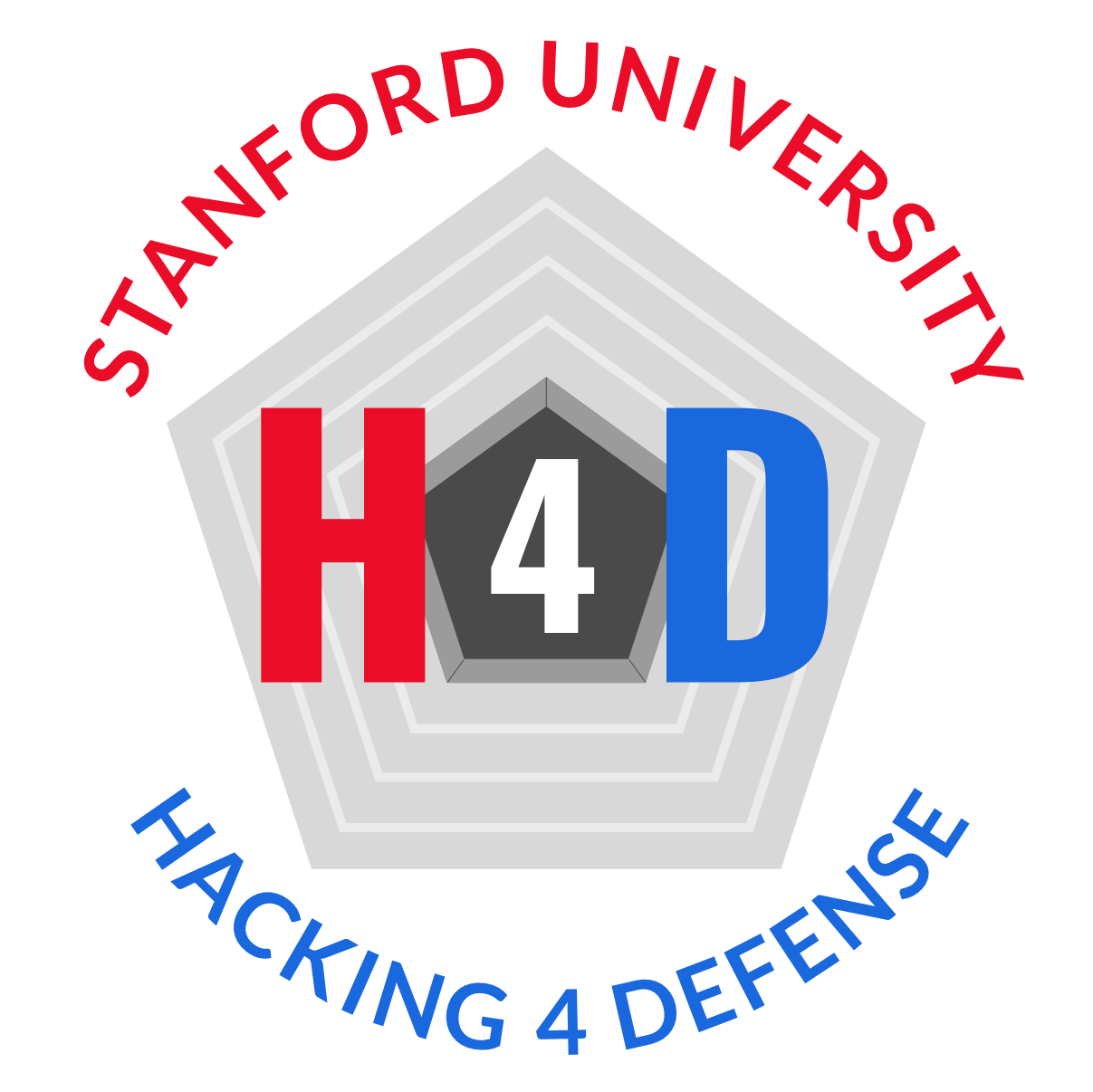2025 Hacking for Defense Problem Statements
From Space Manufacturing to Battlefield AI, Stanford Students Tackle some of the Nation’s Toughest Security and Defense Challenges
In a world where national security challenges are evolving at the speed of light, Stanford University's Hacking for Defense® (H4D) course is calling for its next cohort of problem solvers and innovators. The spring 2025 H4D class at Stanford offers students the choice of 14 critical national security challenges from various defense departments such as the U.S. Air Force, Army, Navy, Defense Innovation Unit, Special Operations Command, Defense Health Agency and National Geospatial Intelligence Agency. The problems presented range from big data challenges, cosmic manufacturing, operations and semiconductors in space, to developing AI-powered battlefield intelligence systems and more.
The H4D course was originally created in 2016 by Steve Blank, Joe Felter and Peter Newell. Blank is known as the Lean Startup founder and creator of the Lean LaunchPad curriculum used in the course, as well as co-founder of Stanford’s Gordian Knot Center for National Security Innovation; Joe Felter is the former deputy assistant secretary of defense for South and Southeast Asia and founding director of the Gordian Knot Center; retired Army Colonel Peter Newell is the CEO of the innovation company BMNT.
Today, H4D’s graduate-level course is focused on defense tech entrepreneurship and is taught at more than 70 of the world’s top colleges and universities across three continents. By taking Silicon Valley’s best practices and putting them to work for national security solutions, more than 3,000 students have successfully completed the intensive project-based program.
The teaching team at Stanford University leading the course includes Steve Blank, Joe Felter, Jeff Decker, Chris Moran, Pete Newell, and Steve Weinstein. Course advisors are Sally Benson, Tom Byers, Arun Majumdar, John Mitchell and Bill Perry.
The work done in the class isn’t just theoretical exercises. The H4D students tackle real problems that the military and intelligence communities face today. The goal of the class is to provide students with an experiential opportunity solving real-world national security problems in a startup environment. Government sponsors benefit from class by increasing the speed at which their organization solves specific, mission-critical problems.
The program's track record backs up its impact: 70 startups have emerged from H4D, creating 660 jobs and raising more than $350 million in funding. Among them is Capella Space, now a unicorn company revolutionizing satellite technology. More than 25% of Stanford H4D teams create a company to deliver a solution to the government.
The H4D spring 2025 defense and national security challenges illustrate the need for the U.S. to be competitive when it comes to the future of defense technology. The class, which has eight teams, will choose from the following challenges and will work directly with military sponsors to develop and test solutions.
This term’s problems are:
U.S. Army
Open-Source Data Dump: AI-powered analysis of intelligence data
Airborne with Ease: Streamlining balloon launch operations
Defense Health Agency
Project MEDForce: Standardizing medical training curriculum
Defense Innovation Unit
Electronic Warfare Vanguard: Modernizing electronic warfare capabilities
Cosmic Manufacturing: Enabling safe return of space-manufactured materials
U.S. Navy
Force Tracking Unbound: Precise tracking of individual Marine locations
National Geospatial-Intelligence Agency
Critical Maps, Timely Operations: Rapid topographical mapping
First Responder Navigation: Real-time disaster zone mapping
Geo-Cultural Population Mapping: Dynamic cultural territory tracking
Translating Data Into Action: Multilingual intelligence analysis
U.S. Army Special Operations Command
Pixels to Precision: Enhanced imagery clarity for intelligence gathering
U.S. Air Force
Contracting Conundrum: Improving vendor assessment
Securing the Lifeline: Ensuring reliable MedEvac communications
Cool Under Pressure: Managing tactical equipment cooling
Students interested in learning more about the H4D course can attend an information session on Monday, January 27, 2025, or Tuesday, February 4, 2025, from 12 to 1 p.m. There will also be two team formation mixers on Tuesday, February 18, and Wednesday, February 19, at 6:30 p.m., where government sponsors will pitch their problems to students.
The class, which is officially entitled "Hacking for Defense: Solving National Security Issues with the Lean Launchpad," meets Tuesdays from 5:30 to 8:20 p.m. during spring quarter. Applications are due Saturday, March 8, 2025, at 11:59 p.m. (PT). Teams are made up of four (4) Stanford University students and can draw from any school or department within the University. The program seeks diverse perspectives, combining engineers, scientists, MBAs and policy experts.
At the core of the H4D course is the use of Lean Startup methodologies, problem solving and using Lean LaunchPad methodologies to create a Mission Model Canvas, create MVPs to test hypotheses, and, ultimately, develop an expert understanding of the problem and how to solve it. The course is also an immersive hands-on lesson on conducting extensive field research with military and intelligence community sponsors. The program emphasizes rapid innovation and real-world impact at the intersection of technology and national security. The structure of the class has been codified in the course textbook, “The Hacking for Defense Manual: Solving National Security Problems with the Lean Methodology,” by Jeff Decker, who is also program director of the Hacking for Defense program.
In the U.S., where the course is a program of record and supported by Congress, H4D is sponsored by the Common Mission Project, Defense Innovation Unit (DIU), and the Office of Naval Research (ONR). Corporate partners include Boeing, Northrop Grumman and Lockheed Martin. Government problem sponsors hail from across government and include the Defense Department, Intelligence Community, Homeland Security, Department of Justice, the State Department, and the VA. H4D is powered by BMNT and its nonprofit partner the Common Mission Project, with support from DIU, whose mission is to field and scale commercial technologies to solve national security problems.
For more information about the H4D course, visit the program's website h4d.stanford.edu.
To learn more about the H4D course at Stanford University, visit h4d.stanford.edu; to learn more about H4D around the world, visit h4d.us. To purchase “The Hacking for Defense® Manual” by Jeff Decker, PhD, visit Amazon. To stay informed on the H4D program, subscribe to the H4D Stanford Substack at stanfordh4d.substack.com.



